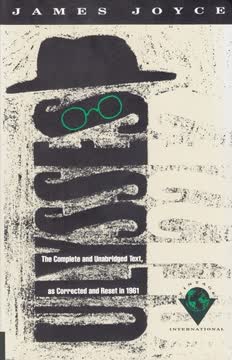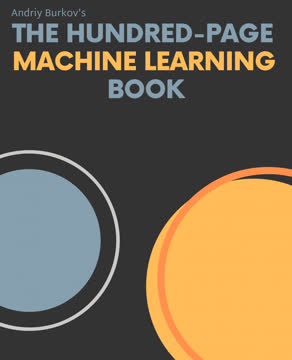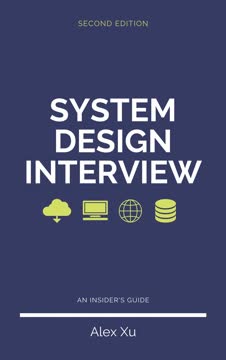نکات کلیدی
1. مبانی C#: نحو، متغیرها و انواع داده
"متغیرها نامهایی هستند که به دادههایی که نیاز داریم در برنامههای خود ذخیره و دستکاری کنیم، اختصاص داده میشوند."
بلوکهای بنیادی. C# یک زبان با نوع قوی است، به این معنی که هر متغیر باید نوع دادهای مشخص داشته باشد. انواع رایج شامل int (اعداد صحیح)، float و double (اعداد اعشاری)، char (کاراکترهای تکی)، string (متن) و bool (مقدارهای درست/نادرست) هستند. متغیرها با استفاده از نحو زیر اعلام میشوند: dataType variableName = value;
ایمنی نوع و تبدیل. C# ایمنی نوع را تحمیل میکند و از انجام عملیات ناخواسته بین انواع ناسازگار جلوگیری میکند. با این حال، در صورت نیاز، اجازه تبدیل نوع صریح (کستینگ) را میدهد. به عنوان مثال:
- int x = (int)20.9; // نتیجه: x = 20 (قسمت اعشاری حذف شده)
- float y = (float)10; // تبدیل عدد صحیح به float
2. برنامهنویسی شیگرا: کلاسها، اشیاء و وراثت
"وراثت به ما اجازه میدهد تا یک کلاس جدید از یک کلاس موجود ایجاد کنیم تا بتوانیم به طور مؤثر از کد موجود استفاده مجدد کنیم."
کپسولهسازی و انتزاع. کلاسها در C# دادههای مرتبط (فیلدها) و رفتارها (متدها) را در یک واحد واحد جمعآوری میکنند. این کپسولهسازی به سازماندهی کد و پنهان کردن جزئیات پیادهسازی غیرضروری کمک میکند. اشیاء نمونههایی از کلاسها هستند که با استفاده از کلمه کلیدی new ایجاد میشوند.
سلسلهمراتب وراثت. C# از وراثت تکگانه پشتیبانی میکند، جایی که یک کلاس مشتق (فرزند) ویژگیها و متدها را از یک کلاس پایه (والد) به ارث میبرد. مفاهیم کلیدی شامل:
- متدهای
virtualدر کلاسهای پایه میتوانند در کلاسهای مشتق بازنویسی شوند - اعضای
protectedدرون کلاس و مشتقات آن قابل دسترسی هستند - سازندهها در کلاسهای مشتق میتوانند با استفاده از کلمه کلیدی
baseسازندههای کلاس پایه را فراخوانی کنند
3. ساختارهای کنترلی: حلقهها، شرطها و مدیریت استثنا
"عبارت try-catch-finally کنترل میکند که برنامه چگونه در صورت بروز خطا پیش برود."
تصمیمگیری. C# چندین ساختار برای کنترل جریان برنامه ارائه میدهد:
- عبارات if-else برای اجرای شرطی
- عبارات switch برای انشعاب چندگانه
- عملگر سهگانه (?:) برای شرطهای درونخطی
تکرار. حلقهها اجازه اجرای تکراری بلوکهای کد را میدهند:
- حلقههای for برای تعداد مشخصی از تکرارها
- حلقههای while برای تکرارهای شرطی
- حلقههای do-while برای حداقل یک بار اجرا
- حلقههای foreach برای تکرار بر روی مجموعهها
مدیریت خطا. مدیریت استثنا در C# از بلوکهای try-catch برای مدیریت مؤثر خطاهای زمان اجرا استفاده میکند و از بروز خرابی جلوگیری کرده و بازخورد معناداری ارائه میدهد.
4. انواع داده پیشرفته: آرایهها، لیستها و LINQ
"LINQ مخفف Language-Integrated Query است و ویژگی جالبی از C# است که به شما اجازه میدهد دادهها را در برنامه خود پرسوجو کنید."
مجموعهها. C# چندین روش برای کار با گروههای داده ارائه میدهد:
- آرایهها: مجموعههای با اندازه ثابت از عناصر همنوع
- لیستها: مجموعههای با اندازه پویا با متدهای داخلی برای دستکاری
- دیکشنریها: مجموعههای جفت کلید-مقدار برای جستجوهای سریع
قدرت LINQ. پرسوجوی یکپارچه زبان (LINQ) امکان پرسوجوی مشابه SQL از دادههای در حافظه را فراهم میکند:
- فیلتر کردن، مرتبسازی و تبدیل دادهها را ساده میکند
- با منابع داده مختلف (آرایهها، لیستها، XML، پایگاههای داده) کار میکند
- از نحو اعلامی استفاده میکند که اغلب خواناتر از کد دستوری است
5. مدیریت فایل: خواندن و نوشتن در فایلهای خارجی
"C# تعدادی کلاس برای کار با فایلها به ما ارائه میدهد."
StreamReader و StreamWriter. این کلاسها خواندن از و نوشتن به فایلهای متنی را تسهیل میکنند:
- StreamReader: کاراکترها را از جریانهای بایت میخواند
- StreamWriter: کاراکترها را به جریانها مینویسد
مدیریت فایل. کلاس File متدهای استاتیک برای عملیات رایج فایل ارائه میدهد:
- File.Exists(): بررسی میکند که آیا فایلی وجود دارد
- File.Create(): یک فایل جدید ایجاد میکند
- File.Delete(): یک فایل را حذف میکند
بهترین شیوهها:
- از عبارات
usingبرای اطمینان از دفع صحیح منابع استفاده کنید - استثناهای احتمالی (مانند FileNotFoundException) را مدیریت کنید
- برای فایلهای بزرگ یا منابع شبکه، عملیات غیرهمزمان را در نظر بگیرید
6. متدها و پارامترها: تعریف و استفاده از توابع
"یک متد یک بلوک کد است که یک کار خاص را انجام میدهد."
آناتومی متد. متدها در C# شامل:
- اصلاحکننده دسترسی (مانند public، private)
- نوع بازگشتی (یا void برای عدم بازگشت)
- نام
- پارامترها (اختیاری)
- بدنه متد
انتقال پارامتر. C# روشهای مختلفی برای انتقال آرگومانها پشتیبانی میکند:
- بهصورت مقدار: یک کپی از آرگومان منتقل میشود (پیشفرض برای انواع مقدار)
- بهصورت مرجع: آدرس حافظه آرگومان منتقل میشود (با استفاده از کلیدواژههای ref یا out)
- کلیدواژه Params: اجازه میدهد تعداد متغیری از آرگومانها منتقل شود
بارگذاری متد. C# اجازه میدهد چندین متد با نام یکسان اما لیست پارامترهای متفاوت وجود داشته باشد که تعریف توابع انعطافپذیر را ممکن میسازد.
7. چندریختی و رابطها: طراحی کد انعطافپذیر
"چندریختی به توانایی یک برنامه برای استفاده از متد صحیح برای یک شیء بر اساس نوع زمان اجرا آن اشاره دارد."
تشخیص نوع زمان اجرا. چندریختی اجازه میدهد اشیاء از انواع مختلف به عنوان اشیاء از یک نوع پایه مشترک رفتار کنند و متد مناسب بر اساس نوع واقعی در زمان اجرا فراخوانی شود.
رابطها. اینها قراردادی از متدها و ویژگیها را تعریف میکنند که کلاسهای پیادهسازیکننده باید به آن پایبند باشند:
- امکان وراثت چندگانه رفتار را فراهم میکند
- ترویج جداسازی ضعیف بین اجزا
- تسهیل تست واحد و شبیهسازی
کلاسهای انتزاعی. اینها جنبههایی از رابطها و کلاسهای عینی را ترکیب میکنند:
- میتوانند شامل متدهای انتزاعی (پیادهسازینشده) و متدهای عینی باشند
- نمیتوانند بهطور مستقیم نمونهسازی شوند
- یک پایه مشترک برای کلاسهای مرتبط فراهم میکنند
8. ساختارها و Enumها: انواع داده سفارشی
"یک enum (که مخفف نوع شمارشی است) یک نوع داده خاص است که به برنامهنویسان اجازه میدهد نامهای معناداری برای مجموعهای از ثابتهای عددی ارائه دهند."
مزایای ساختار. ساختارها انواع مقداری هستند که میتوانند شامل متدها و ویژگیها باشند:
- از نظر حافظه نسبت به کلاسها برای ساختارهای داده کوچک کارآمدتر هستند
- بهطور خودکار معنای مقداری را پیادهسازی میکنند
- نمیتوانند در وراثت شرکت کنند
استفاده از Enum. Enumها خوانایی کد و ایمنی نوع را بهبود میبخشند:
- مجموعهای از ثابتهای نامگذاری شده را تعریف میکنند
- میتوانند در عبارات switch برای کد تمیزتر استفاده شوند
- نوع زیرین میتواند مشخص شود (پیشفرض int است)
9. کاربرد عملی: ساخت یک سیستم حقوق و دستمزد ساده
"این برنامه شامل شش کلاس به شرح زیر است: Staff، Manager : Staff، Admin : Staff، FileReader، PaySlip، Program"
طراحی مدل شیء. سیستم حقوق و دستمزد کاربرد عملی مفاهیم OOP را نشان میدهد:
- سلسلهمراتب وراثت با Staff به عنوان کلاس پایه
- کلاسهای تخصصی (Manager، Admin) با متدهای بازنویسی شده
- کلاسهای کاربردی (FileReader، PaySlip) برای وظایف خاص
ادغام مفاهیم. این پروژه ترکیبی از ویژگیهای مختلف C# است:
- ورودی/خروجی فایل برای خواندن دادههای کارمندان
- LINQ برای دستکاری دادهها
- چندریختی برای محاسبه حقوق
- مدیریت استثنا برای عملیات پایدار
ملاحظات دنیای واقعی. این مثال اصول مهم طراحی نرمافزار را برجسته میکند:
- جداسازی نگرانیها (به عنوان مثال، خواندن فایل جدا از محاسبه حقوق)
- قابلیت گسترش (اضافه کردن انواع جدید کارمندان به راحتی)
- قابلیت نگهداری از طریق طراحی مدولار
آخرین بهروزرسانی::
FAQ
What's "Learn C# in One Day and Learn It Well" about?
- Beginner-friendly guide: The book is designed to help beginners learn C# programming quickly and effectively, with no prior coding experience required.
- Hands-on approach: It includes a hands-on project where readers build a simple payroll software, applying the concepts learned throughout the book.
- Comprehensive coverage: Topics range from basic syntax and data types to more advanced concepts like object-oriented programming and file handling.
- Practical examples: Each concept is demonstrated with carefully chosen examples to ensure a deeper understanding of C#.
Why should I read "Learn C# in One Day and Learn It Well"?
- Fast learning curve: The book is structured to help you start coding in C# immediately, making it ideal for those on a tight schedule.
- No prior experience needed: It assumes no prior background in coding, making it accessible to complete beginners.
- Project-based learning: The included project helps solidify your understanding by applying concepts in a real-world scenario.
- Broad exposure: It covers a wide range of topics without overwhelming the reader, providing a solid foundation in C#.
What are the key takeaways of "Learn C# in One Day and Learn It Well"?
- Understanding C# basics: Learn the basic structure of a C# program, including directives, namespaces, and the Main() method.
- Data types and variables: Gain knowledge about different data types, variable naming, and initialization in C#.
- Control flow and loops: Master control flow statements like if, switch, and loops such as for, foreach, while, and do-while.
- Object-oriented programming: Understand key OOP concepts like classes, inheritance, polymorphism, and interfaces.
What are the best quotes from "Learn C# in One Day and Learn It Well" and what do they mean?
- "The best way of learning about anything is by doing." - This quote emphasizes the book's hands-on approach, encouraging readers to actively engage with coding exercises.
- "Topics are carefully selected to give you a broad exposure to C#, while not overwhelming you with information overload." - It highlights the book's balanced approach to teaching, ensuring comprehensive yet manageable content.
- "Once you master C#, you will be familiar with these concepts. This will make it easier for you to master other object-oriented programming languages in future." - This quote underscores the transferable skills gained from learning C#, which can be applied to other programming languages.
How does "Learn C# in One Day and Learn It Well" approach teaching C#?
- Step-by-step guidance: The book provides clear, step-by-step instructions for each concept, making it easy to follow along.
- Practical examples: Each topic is illustrated with practical examples that demonstrate how to apply the concepts in real-world scenarios.
- Project-based learning: The book includes a project that ties together all the concepts learned, reinforcing understanding through practical application.
- Focus on fundamentals: It emphasizes understanding the fundamentals of C#, ensuring a strong foundation for further learning.
What is the hands-on project in "Learn C# in One Day and Learn It Well"?
- Payroll software: The project involves coding a simple payroll software from scratch, applying the concepts covered in the book.
- Real-world application: It provides a practical context for learning, helping readers see how C# can be used to solve real-world problems.
- Concept integration: The project integrates various topics such as object-oriented programming, file handling, and control flow.
- Source code availability: Readers can download the source code for the project, allowing them to compare their work and learn from the provided solution.
What are the basic concepts of C# covered in "Learn C# in One Day and Learn It Well"?
- Program structure: Learn about the basic structure of a C# program, including directives, namespaces, and the Main() method.
- Variables and data types: Understand how to declare, initialize, and use variables, as well as the different data types available in C#.
- Operators: Get familiar with basic operators like addition, subtraction, multiplication, division, and modulus, as well as assignment operators.
- Arrays and strings: Explore advanced data types like arrays and strings, including their properties and methods.
How does "Learn C# in One Day and Learn It Well" explain object-oriented programming?
- Class and object creation: Learn how to write your own classes and create objects from them, understanding the blueprint-object relationship.
- Fields and properties: Understand the role of fields and properties in encapsulating data within a class.
- Methods and constructors: Discover how to write methods and constructors, including overloading and the use of the static keyword.
- Inheritance and polymorphism: Explore how inheritance allows code reuse and how polymorphism enables method overriding in derived classes.
What advanced topics are covered in "Learn C# in One Day and Learn It Well"?
- Exception handling: Learn how to use try-catch-finally statements to handle errors and exceptions in your programs.
- File handling: Understand how to read from and write to external files using classes like StreamReader and StreamWriter.
- LINQ: Get introduced to Language-Integrated Query (LINQ) for querying data in your programs.
- Enums and structs: Explore user-defined data types like enums and structs, and understand their use cases.
How does "Learn C# in One Day and Learn It Well" address error handling?
- Try-catch-finally: The book explains how to use try-catch-finally statements to manage exceptions and ensure resources are released properly.
- Specific exceptions: Learn about handling specific exceptions like FileNotFoundException and FormatException for more precise error management.
- Error messages: Understand how to display meaningful error messages to users when exceptions occur.
- Preventing crashes: The book emphasizes the importance of error handling in preventing program crashes and ensuring smooth execution.
What is the significance of the Main() method in C# as explained in "Learn C# in One Day and Learn It Well"?
- Entry point: The Main() method is the entry point of all C# console applications, where program execution begins.
- Method signature: It can take an array of strings as input, allowing command-line arguments to be passed to the program.
- Code execution: The book explains how to write and execute code within the Main() method, including calling other methods and classes.
- Program structure: Understanding the Main() method is crucial for grasping the basic structure and flow of a C# program.
How does "Learn C# in One Day and Learn It Well" explain the use of control flow statements?
- If and switch statements: Learn how to use if and switch statements to make decisions and control the flow of your program.
- Loops: Understand the use of loops like for, foreach, while, and do-while for repeating tasks and iterating over collections.
- Jump statements: Explore jump statements like break and continue for altering the flow of loops and switch statements.
- Practical examples: The book provides practical examples to demonstrate how control flow statements are used in real-world scenarios.
نقد و بررسی
کتاب C# را در یک روز بیاموزید و به خوبی یاد بگیرید به طور کلی نظرات مثبتی دریافت کرده است و خوانندگان از توضیحات مختصر و واضح آن برای مبتدیان قدردانی میکنند. بسیاری از برنامهنویسان با تجربه نیز این کتاب را برای یادگیری C# یا تجدید مهارتهای خود مفید میدانند. این کتاب به خاطر رویکرد عملیاش، شامل تمرینات و یک پروژه نهایی، مورد تحسین قرار گرفته است. برخی منتقدان اشاره میکنند که ممکن است برای مبتدیان مطلق یا کسانی که به دنبال پوشش عمیقتری هستند، مناسب نباشد. به طور کلی، خوانندگان از سبک ساده و توانایی کتاب در درک سریع اصول C# قدردانی میکنند، هرچند برخی پیشنهاد میکنند که برای درک جامعتر، از منابع اضافی نیز استفاده شود.

















